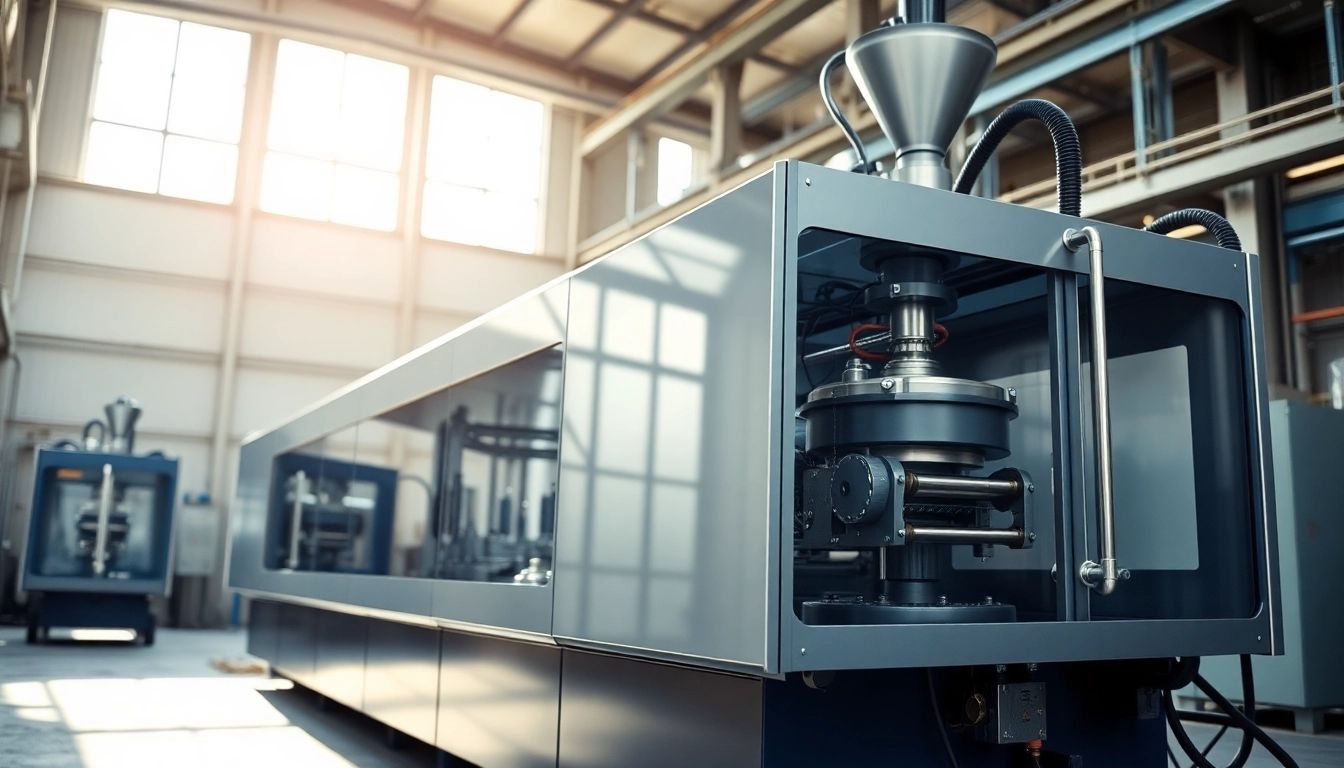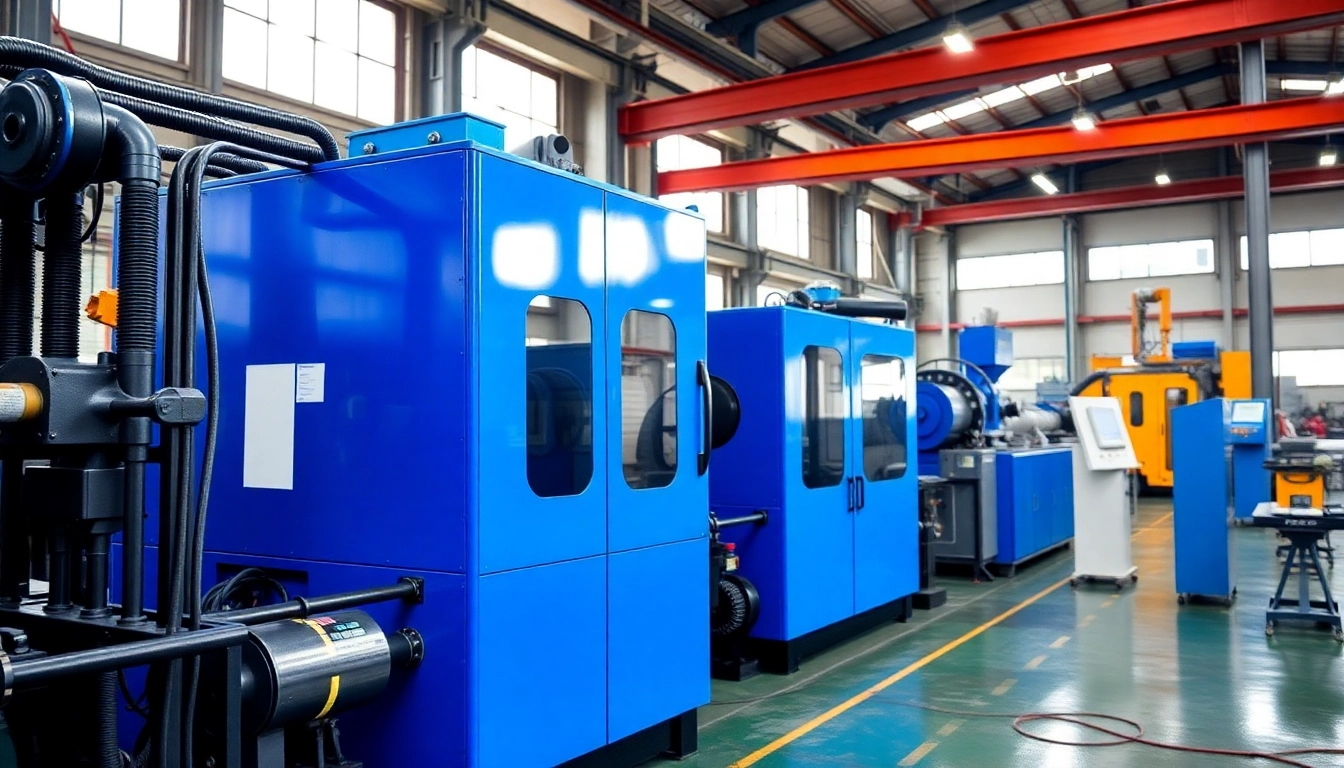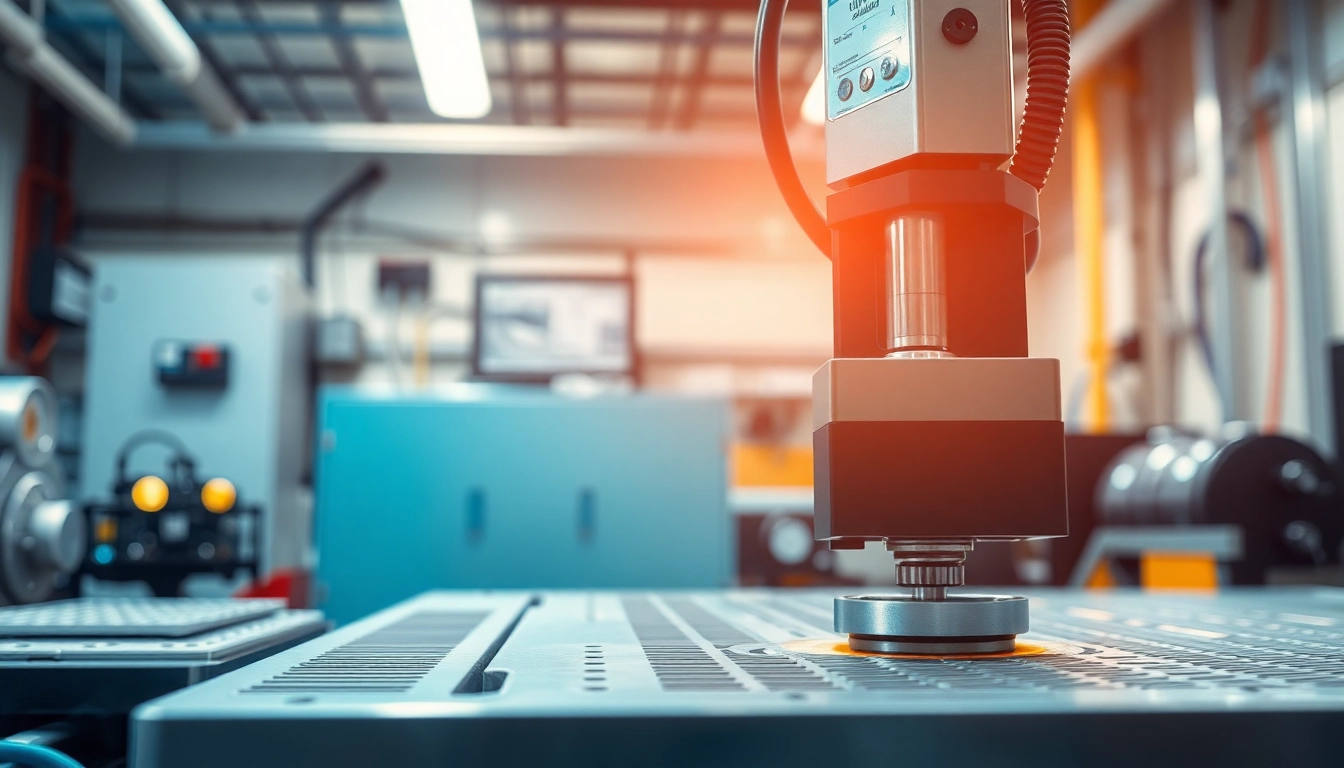Understanding Blow Molding Technology
Blow molding is a manufacturing process used to create hollow plastic components. This technique is instrumental in producing objects such as bottles, containers, and other hollow shapes. As a Blow Molding Machine Manufacturer, it is crucial to comprehend the various aspects of this technology, including its applications, advantages, and the types of machines available in the market.
The Fundamentals of Blow Molding
The process of blow molding involves inflating a molten plastic tube—called a parison—inside a mold to form a hollow shape. The manufacturing cycle typically breaks down into three primary phases: the extruding of the parison, the placing of the parison into the mold, and finally, the application of air to expand and form the desired shape. This method is efficient for creating products that require uniform wall thickness and can be produced at high production rates.
The Different Types of Blow Molding Machines
There are primarily three types of blow molding processes: extrusion blow molding (EBM), injection blow molding (IBM), and stretch blow molding (SBM).
- Extrusion Blow Molding (EBM): In this method, a continuous tube of molten plastic is extruded and then shaped into a mold. This technique is widely used for manufacturing bottles and containers and is particularly beneficial for producing large and complex shapes.
- Injection Blow Molding (IBM): This combines injection molding and blow molding techniques, where the preform is injection molded before it’s blown into the final shape. IBM is often utilized for smaller-scale products or components requiring high precision, such as medical containers and personal care bottles.
- Stretch Blow Molding (SBM): This method involves the stretching of a preform, which is subsequently inflated to produce lightweight and strong containers, typically used for producing PET bottles for beverages.
Applications of Blow Molding in Industry
Blow molding serves a diverse range of industries due to its versatility and efficiency. Here are some notable applications:
- Packaging: The food and beverage industry relies heavily on blow molding for bottling products like water, soft drinks, and sauces.
- Consumer Goods: Personal care products such as shampoos, lotions, and cleaners are often housed in blow-molded bottles.
- Industrial Applications: Large containers and tanks for chemical storage are also produced using blow molding techniques due to the strength and customizability of the materials.
- Automotive Components: Lightweight parts for cars can be efficiently produced through blow molding, aiding in reducing overall vehicle weight and increasing fuel efficiency.
Choosing a Reliable Blow Molding Machine Manufacturer
Selecting the right manufacturer for blow molding machines can significantly impact your production quality and efficiency. It’s imperative to assess several key factors to ensure a suitable partnership.
Key Factors to Consider
When evaluating a blow molding machine manufacturer, consider the following criteria:
- Machine Technology: Ensure the manufacturer offers the latest technology and innovative features that can facilitate efficient production.
- Customization: Look for manufacturers who can provide bespoke solutions tailored to your specific production needs.
- Customer Support: Comprehensive support and maintenance services are vital for minimizing downtime and ensuring the longevity of your machines.
- Cost-Effectiveness: Analyze the total cost of ownership, including initial purchase price, operational costs, and long-term maintenance when considering machine investments.
Evaluating Manufacturer Reputation and Experience
The credibility and experience of a blow molding machine manufacturer play a critical role in the decision-making process. Research their market presence, read reviews, and examine case studies that showcase their success in the industry. Notable manufacturers like Uniloy and Wilmington Machinery set benchmarks with their advanced technologies and reliable service.
Main Features of High-Quality Blow Molding Machines
Top-tier blow molding machines incorporate several important features that enhance performance:
- Energy Efficiency: Modern machines are designed to minimize energy consumption, reducing overall operational costs.
- Speed and Production Rate: The capability to produce large quantities rapidly is crucial for meeting market demand without compromising quality.
- Precision: Advanced controls and monitoring systems ensure that dimensions and specifications meet exact requirements, reducing scrap and rework.
- User-Friendly Interfaces: The incorporation of intuitive controls simplifies operation and enhances productivity.
Innovations in Blow Molding Manufacturing
The blow molding industry is continuously evolving, propelled by technological advancements that enhance production processes and product quality.
Recent Technological Advancements
In recent years, advancements such as automation, IoT integration, and advanced material science have reshaped blow molding manufacturing. Automation in blow molding machines helps liberate labour resources while improving precision and repeatability. IoT capabilities allow real-time monitoring of machine health and production metrics, enhancing efficiency.
The Impact of Industry 4.0
Industry 4.0 plays a vital role in revolutionizing the manufacturing landscape, including blow molding technologies. With smart manufacturing, companies benefit from real-time data analytics, predictive maintenance, and enhanced collaboration among machines, improving operational workflows and decision-making processes.
Case Studies of Successful Manufacturers
Several manufacturers have successfully adopted these innovations. For instance, Graham Engineering has seen enhanced performance metrics through the integration of smart technologies in their blow molding systems. By leveraging IoT, they can remotely monitor systems and improve their response times to mechanical issues, which cuts down downtime significantly.
Cost Considerations When Investing in Blow Molding Machines
Investing in blow molding machines entails several costs that range from initial setup to ongoing operational expenses. It’s important for manufacturers to understand these costs to make informed decisions.
Initial Setup and Operational Costs
The initial setup of a blow molding machine includes the cost of the machine itself, installation, training, and setup expenses. It’s critical to account for these upfront costs to ensure they fit into your budget genuinely. Operational costs encompass energy usage, raw material expenses, and labor costs associated with managing the processes.
Long-term Maintenance and Support
Regular maintenance is key to prolonging the life of blow molding machines. Manufacturers should consider the availability of replacement parts, service packages, and the reputation of the manufacturer for customer support services. All these factors play a substantial role in the long-term cost of ownership.
ROI: Understanding Value over Time
Understanding the return on investment (ROI) from blow molding machines is crucial. Companies should analyze their production capabilities, production quality, and operational costs over time to quantify the machine’s value. Tools supporting data analysis and performance metrics can help manufacturers assess profitability and adjust as required.
Future Trends in Blow Molding Production
As the blow molding industry evolves, emerging trends suggest a shift toward more sustainable and efficient manufacturing processes. Keeping abreast of these trends is vital for manufacturers looking to stay competitive.
Sustainability in Blow Molding Practices
With increasing global emphasis on sustainability, manufacturers are pursuing eco-friendly practices in blow molding. This includes using recyclable raw materials, reducing energy consumption, and minimizing waste generated during production. Innovation in materials—such as biodegradable plastics—also plays a role in moving towards sustainable practices.
Market Demand and Growth Projections
The market for blow molding machines is projected to grow significantly, driven by rising demand for plastic packaging in various sectors. Increased consumer demand for packaged goods and the need for lightweight materials in the automotive industry are expected to fuel this growth.
Emerging Markets for Blow Molding Technology
Regions such as Asia-Pacific are emerging as significant markets due to their increasing manufacturing capabilities and demand for consumer products. As companies in these regions seek modern manufacturing solutions, the demand for advanced blow molding machines will likely surge.



